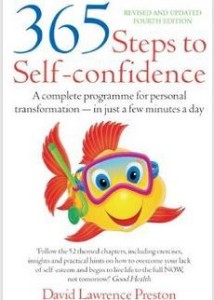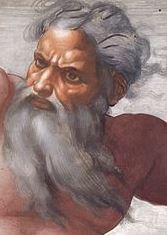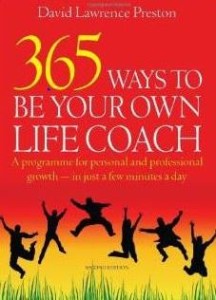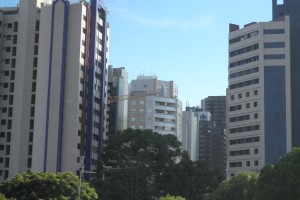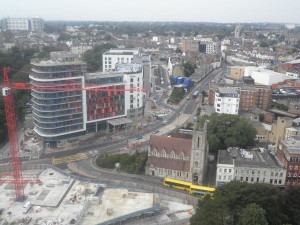In-I-T-I-A-te change!
When you apply the I-T-I-A Formula – Self-awareness +Intention +Thinking +Imagination +Action – to confidence building, the shift in consciousness is not necessarily dramatic, more like a gradual awakening. Over time, you cast off your negative conditioning and adopt more empowering beliefs. Then feelings and actions change too.
It’s like climbing a ladder; don’t try too much at once, take it one rung at a time. Small steps are important. Every day, stretch yourself a little further; have a go at something which you would previously have found too daunting, like striking up a conversation with a stranger, asserting yourself, or giving a talk to a local group.
Each time you succeed, you gain encouragement, your attitude changes, and before long it will get easier and you’ll feel better than ever before.
One of the secrets of confidence building is to act ‘as if’ you’re growing in confidence, and ‘as if’ you are the person you want to be. This is what William Shakespeare meant when he wrote, ‘Assume a virtue if you have it not’.
Project an air of quiet confidence, even if you don’t feel it. For instance, if you feel shy in the company of people you don’t know, shake hands firmly, look them in the eye, speak with a confident tone of voice, and smile. It may feel like a big effort at first, but even if you have butterflies in your stomach, act as if you’re confident and you will feel more confident. Eventually the uncomfortable feelings fade.
Many outwardly confident people had to work at it, knowing that if you act confidently and look as if you know what you’re doing, then sooner or later you will feel that way.
If it feels uncomfortable to begin with, remember that it’s only your programming and conditioning trying to keep you to old habits.
It’s important to keep in mind what you’re striving for – reinventing yourself as a calm and confident person with high self-esteem and a healthy and secure self-image.
Mental rehearsal
Creative imagery is a great ally when building confidence. Mentally rehearse any impending challenge, creating the perfect result in your mind every time to impress this on your subconscious. ‘See’, ‘hear’ and ‘feel’ yourself as a confident and successful person.
Here’s a useful four-stage routine for building confidence. Let’s say you have some goal in mind, such as making a sale, attracting a member of the opposite sex, passing an exam or attending a job interview:
- ‘Visualise’ yourself as a confident person and imagine what it would feel like to be loaded with confidence.
- Next,’ visualise’ yourself behaving confidently, for instance delivering the talk with assurance, interacting with others confidently and handling difficult questions with ease.
- ‘Visualise’ yourself having accomplished your objective.
- Finally, ‘visualise’ others’ response to your success, e.g. applauding, congratulating you etc.
Remember also to use the modelling, and anchoring techniques to the full.
Celebrate your progress!
Every time you take a step forward, reward yourself. Buy yourself a small treat, take a weekend break, go on a course – something that will give you a further taste of pleasure and success.
If on the other hand things don’t work out as you planned, don’t chastise yourself. Reflect on what you can learn from it and put the episode down to experience.
Focus on the positives
Every moment, think of all the good qualities you have. Don’t get caught up in what others think of you – or, more correctly, what you imagine others may think of you (because we can never know for sure what another person is thinking). Otherwise you’ll only attract people who demand you to keep them happy.
Instead, keep yourself happy! Be the kind of person you want to be and you’ll attract others who are the same. Remember, like attracts like. The rest follows automatically.
Be patient
If you really believed in yourself, how would you feel? Then isn’t it worth spending a little time each day working on yourself, building your self-belief? Of course it is. With a good self-image, confidence, a clear purpose and a realistic action plan almost anything is possible.
But you’ll have to be patient. Rome wasn’t built in a day, and, if your confidence is currently low, neither is self-belief. So start now, wherever you are at, and never, never give up. It’s open to everyone!
©David Lawrence Preston, 25.8.2018
Follow me on Facebook and Twitter @David_L_Preston
How To Books, 2010


